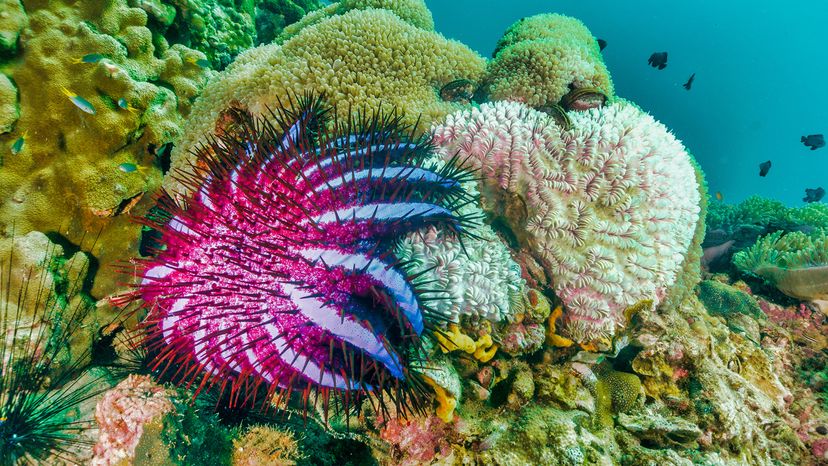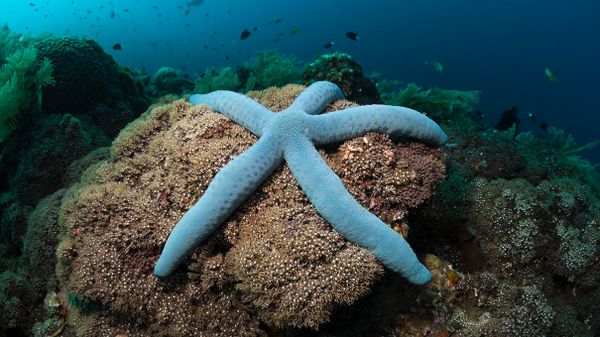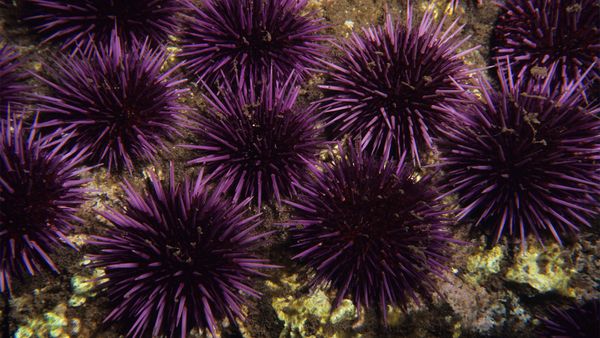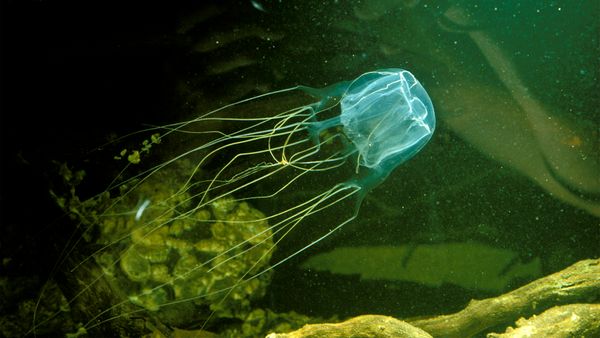Making a short list of popular starfish is challenging because there are so many species to choose from — over 2,000 different species, to be precise. Here are just a few species that should satisfy your hunger for unique animal knowledge.
1. Bat Sea Star (Asterina miniata)
This is not a masked vigilante or part of the Dark Knight's arsenal, but it is a cool species of starfish. The bat sea star got its name because of the batwing-like webbing between its rays (arms). Most bat sea stars sport five appendages, but some have been known to grow over nine.
2. Brisingid Sea Star (Brisingida)
These plant-like brisingids are some of the deepest diving species, sometimes living deeper than 19,000 feet (5,791 meters) below sea level. They use their leaf-shaped arms to filter water and wait until they finally get a brief moment of substantial food from unsuspecting victims and decomposing fauna from above.
3. Crown-of-Thorns Starfish (Acanthaster planci)
If the ocean had a fashion runway, these dazzling organisms would be on it. Sporting bright, bold neon colorings and thorny upper spines, these animals are hard to miss — hope that you are lucky enough to see them and not accidentally step on these prickly fellas.
4. Granulated Sea Star (Choriaster granulatus)
It's lucky that starfish don't have ears because some of the nicknames this poor species receives would send most people into a quick depression — "cushion sea star" and "doughboy star" are just a couple.
5. Leather Star (Dermasterias imbricata)
This sea star monopolizes a large portion of available small prey in the intertidal zone. However, they don't play nicely with the next species on this list, as the morning sun star is one of its primary predators.
6. Morning Sun Star (Solaster dawsoni)
This amazing predator has 8 to 16 arms and thousands of tube feet, which it uses to fill its mouth and stomach with mussels, small fish and other sea stars.
7. Pacific Blood Star (Henricia leviuscula)
This orange-colored sea star has five slender, long arms. For this species especially, the ability to regenerate its limbs extends its life significantly, as it doesn't have as many to spare as other species.
8. Pink Sea Star (Pisaster brevispinus)
This large species can weigh up to 2 pounds (0.9 kg) and span a diameter of 2 feet (0.6 meters) wide. The pink sea star is also the inspiration for Nickelodeon's lovable animated starfish character Patrick, who stars alongside his square-pants-wearing pal, Spongebob.
9. Royal Starfish (Astropecten articulates)
The royal starfish is named for its deep royal purple skin, trimmed with a gilded orange outline along its rays. These sea stars live along rocky coastlines in North America where they manage to snare smaller animal victims, such as small fish and mollusks whole.
10. Sunflower Star (Pycnopodia helianthoides)
This species is one of the most appendage-heavy sea stars in the ocean, with roughly 24 arms that allow this predator to hunt while roaming at 3.3 feet (1 m) per hour. These starfish spend most of their lives in colder Pacific waters between Alaska and California.



